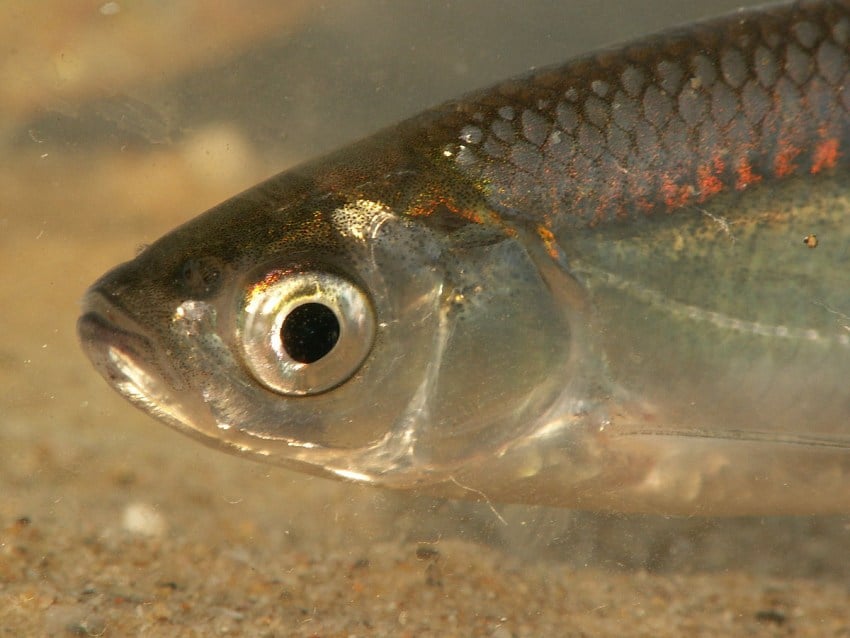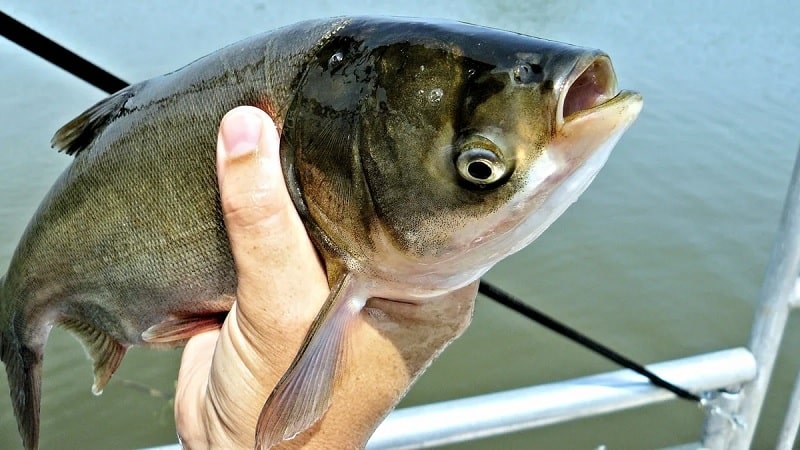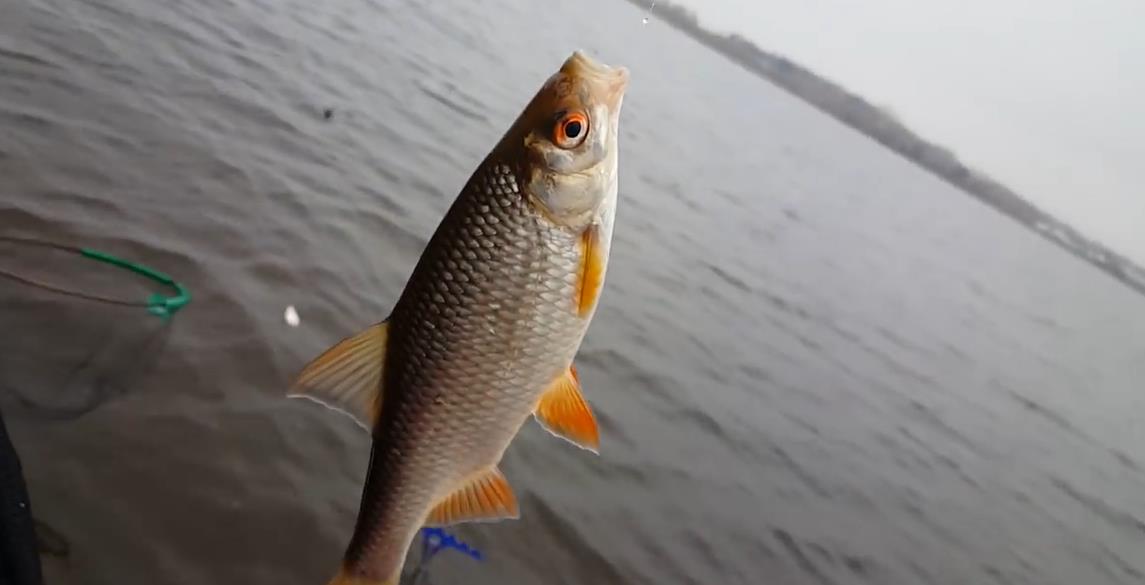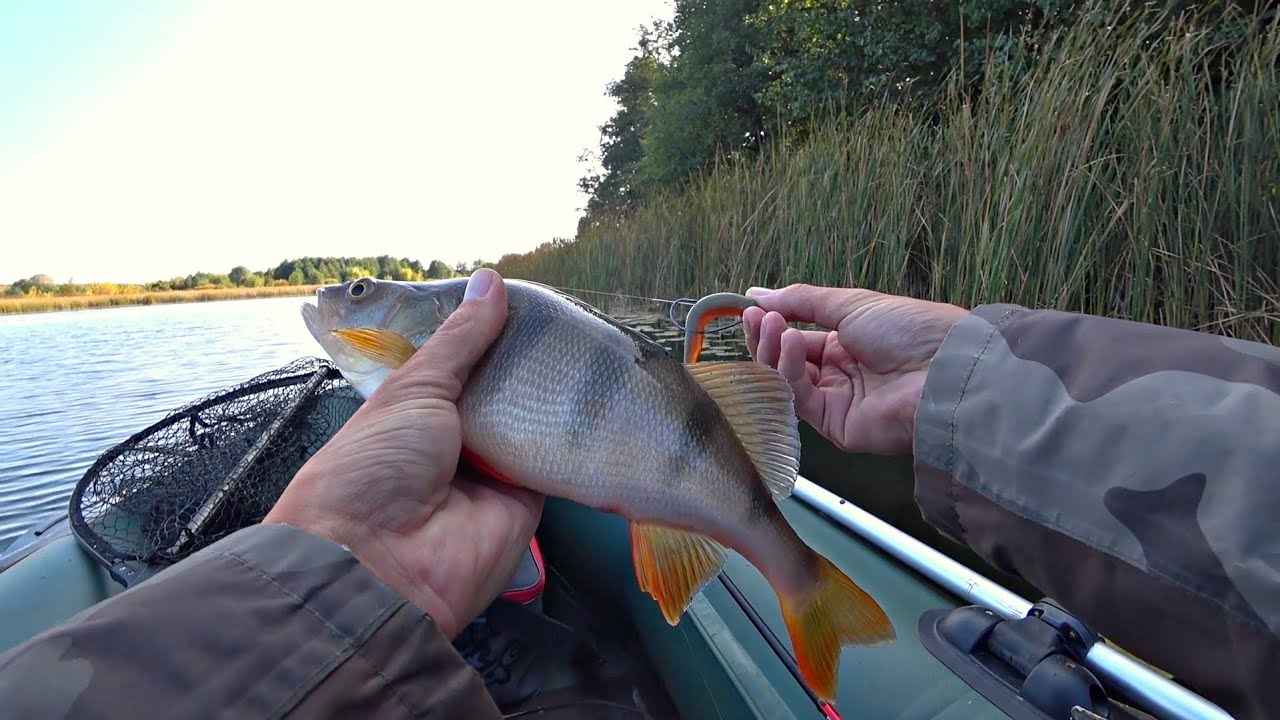Bleak (bleak, sebel) is a small, mobile, agile freshwater fish that lives almost everywhere in the reservoirs of the middle zone. It is characterized by a pelagic lifestyle.
Bleak, apparently, is one of the fish, which has a lot of different names depending on the zonality of its habitat. There are shaklea and docklea and buckley / baklea, and sebil and sibil, and selyavka and synth … A conditionally complete list can be found below, bleak is a small but very diverse fish, including in its nicknames.
- Bleak fish: a general description with a photo, alternative “nicknames” of the little ones
- Description of buckle species
- The difference between bleak and adjacent and similar fish
- Where the Selyavka lives – the area of distribution in Russia and the world
- Habits and lifestyle depending on the season
- Spawning features
- What bleak eats
- How to catch sebel
- Where to find bleak?
- Required tackle
- How to fish: technique, tactics, bait and tips from fishermen
- Lure
- Using bleak as live bait
- Taste qualities
- The benefits and calorie content of meat
- How to quickly and deliciously cook bleak – recipes
- Поделиться ссылкой:
Bleak fish: a general description with a photo, alternative “nicknames” of the little ones
Bleak is a common fish belonging to the Karpov family. It has a shiny, pronounced pelagic color: the abdomen and sides are light, silvery, and the back is darkish, gray, with a greenish tint.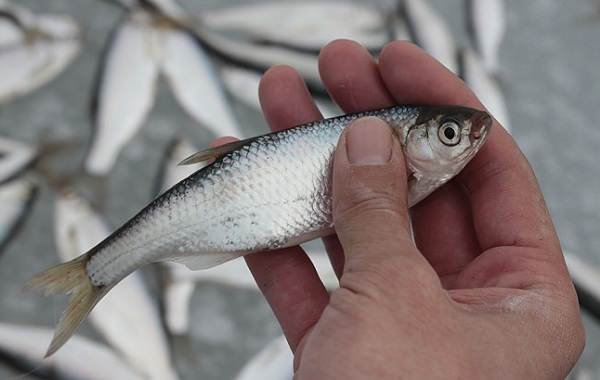
- In Orenburg and in the region she was nicknamed whitefish, white-eyed and syntyavka;
- In Astrakhan – dergun;
- In Samara – chebanchik or chebak;
- In the Penza region – Kalinka;
- In Saratov – bakleshka;
- In Tver and Serpukhov – top – melting and top – water (which is not entirely true, this is a different fish, although very similar to bleak);
- On the Kama river they call shakleika;
- On Vyatka – shacklea;
- In the Urals – a groom and a harmack;
- Selyava on the Upper Volga;
- On the Oka – Sikla;
- On the Desna and the Diet – sebel;
- On the Dniester – swia.
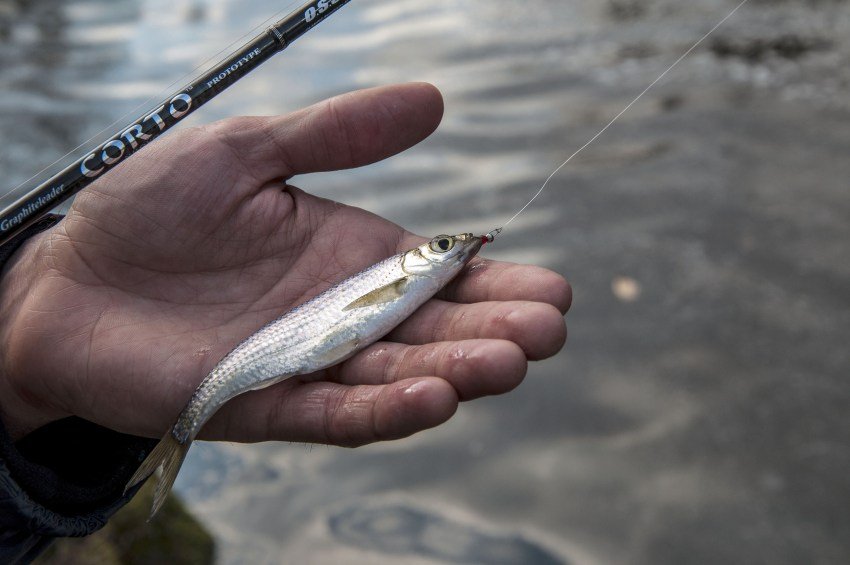
Description of buckle species
The genus Alburnus (bleak) has up to 45 species. A commonly known species is the common bleak (
Alburnus alburnus ). Its description is given above. A characteristic feature by which you can distinguish one species from another is the number of scales in the lateral line. For ordinary bleak, it is 45-55 pieces. In the genus Alburnus, there are many endemic species that live only in a particular water body.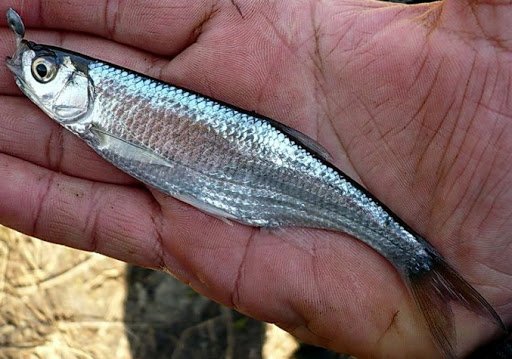
- The Danube or Caspian glue ( Alburnus chalcoides ) – differs from the common species in larger sizes: the body length is on average 15 to 30 cm, and sometimes 40 cm.The number of scales on the lateral line varies from 57 to 70 pieces.
- Bleak Caucasian ( Alburnus Charusini ) – body size smaller than that of ordinary bleak, and is not more than 10 cm outwardly distinguishable from known species difficult.. There are 41-45 scales along the lateral line.
- The Azov-Black Sea Shemaya ( Alburnus mento ) is a rare species that can grow up to 35 cm.The standard weight of individuals is 200-250 grams. It differs from ordinary bleak in the orange color of the pectoral fins, wider body and dimensions. There are 64-70 scales on the lateral line.
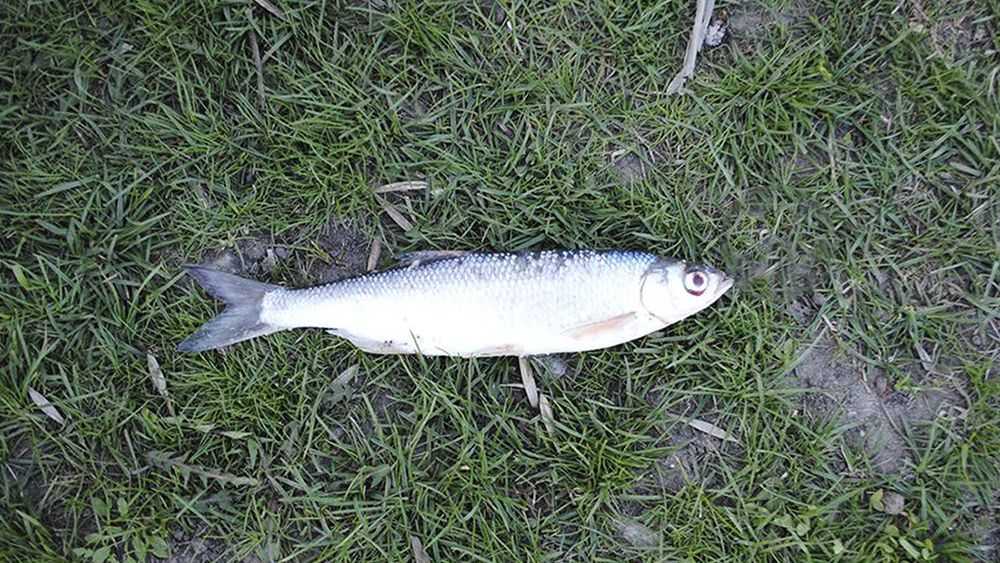
The difference between bleak and adjacent and similar fish
Adults of
Verkhovka and Raptor are very similar to bleak. Some fishermen are often confused
dace is small in size with a bleak. The body of the bastard is taller and shorter than that of the bleak. Her mouth is semi-lower, and bleak has a semi-upper one. The number of scales on the lateral line is 45-55 for bleaks, and 44-52 for fast-growing. The body of the Verkhovka is narrower than that of the bleak. Her eyes are located in the upper part of her head, and bleak – on the sides of her head. The upper has an upper mouth shape and a blunt stigma, and the bleach is pointed. Its lateral line is incomplete, has no more than 14 scales. Another fish similar to bleak is the dace, but it differs from the bakleyka in the semi-lower type of mouth and in the slightly cut shape of the anal fin. 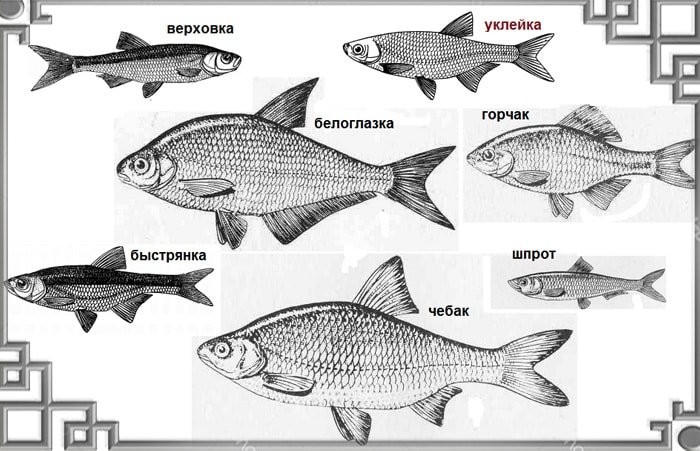
Where the Selyavka lives – the area of distribution in Russia and the world
Distributed in the west of Eurasia. The area of distribution covers the countries of Europe and the European part of Russia. The eastern border of the area runs along the western coast of the Caspian Sea and the Urals. Baklya is numerous in the Middle Urals, inhabits the rivers of the Kama basin and the reservoirs built on them. Through the canals it got into the rivers of the Ob-Irtysh basin. Occurs in the Novosibirsk reservoir.
Habits and lifestyle depending on the season
In the warm period, the fish keeps in the upper layers of the water, at a depth of 50-70 cm. It moves in flocks along the reservoir. Active behavior: tickling is constantly in motion. It feeds all day long. In the mornings and evenings, it hunts for small insects on the surface of the water, snatching them on the fly and jumping out of the water. On rainy and cloudy days, bleak behaves in a similar way, grabbing midges and mosquitoes flying close to the surface of the reservoir. There is no activity at night. As it gets colder, the synth gradually goes deeper. In winter, it does not feed, falls into a state of numbness, while being in the pits. When thaws come, the activity increases slightly. Fishing in the winter is ineffective.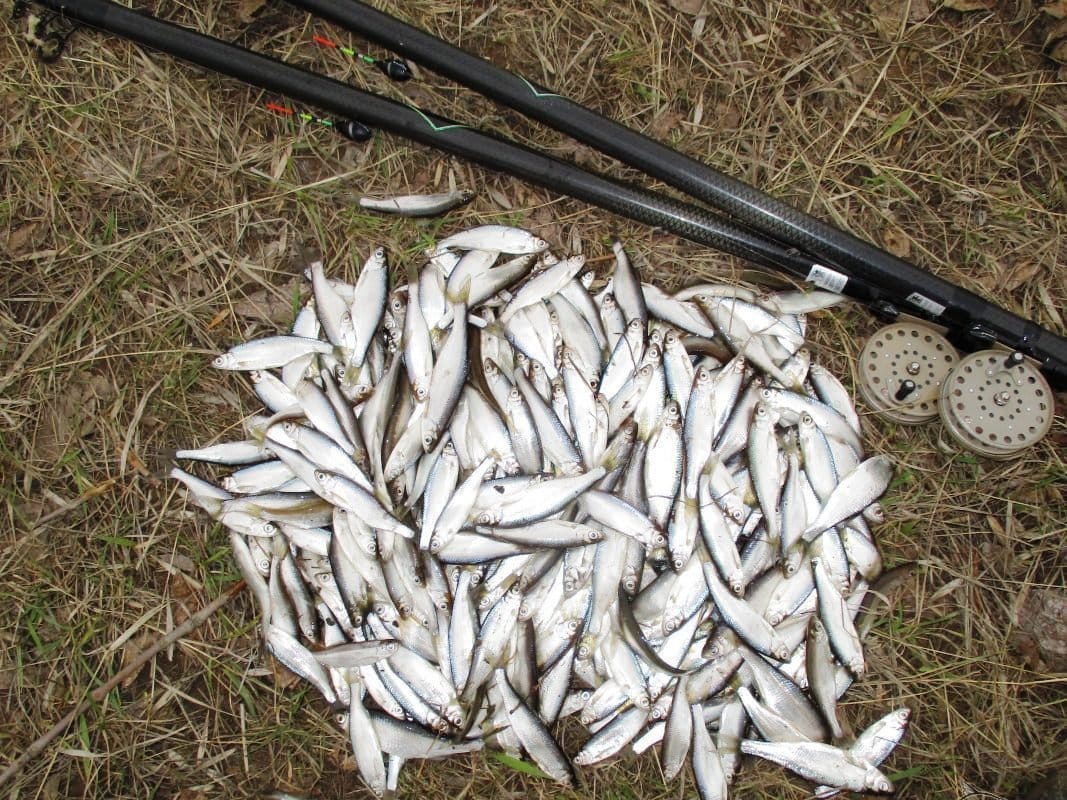
Spawning features
Sexual maturity occurs at 2-3 years. The minimum water temperature for breeding is +15
0C. The process begins in May and continues until early July. Spawning grounds are calm shallow areas (10-50 cm) with the presence of underwater vegetation. Rarely are sandy-pebble shoals and rocky ground selected for spawning. The eggs are laid in portions: 3-4 times. In warm weather, the break between approaches is several days, and in cold weather, the spawning process can take a month or more. Often spawning sessions are repeated after about two weeks. Older large individuals spawn first, and then young ones. In the process of laying eggs, they behave violently, jumping out of the water. Sticky eggs attach to plants, rocks and driftwood. Fertility is high: 300-400 eggs are formed per 1 gram of body weight. One clutch includes from 3 to 5 thousand eggs. The incubation period lasts about a week.The size of the hatched babies does not exceed 4 mm. By autumn, the length of the fry reaches 3-5 cm.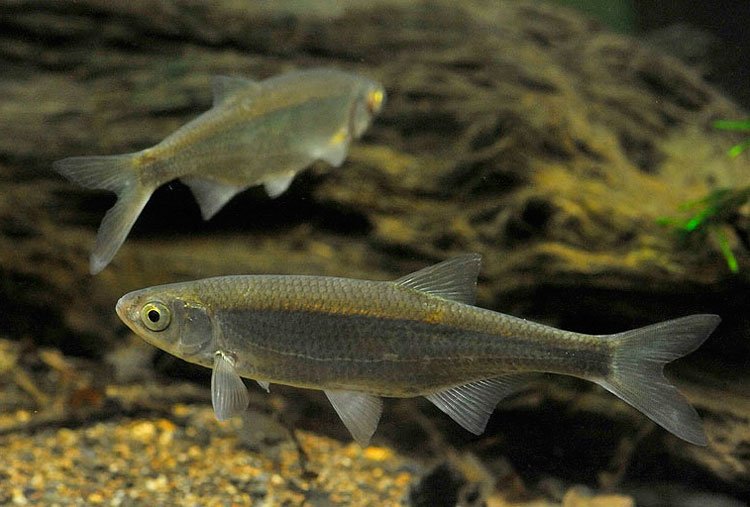
What bleak eats
The nature of the diet is omnivorous, but food of animal origin is preferred. There is no seasonal preference. Zooplankton is mainly used: fry, crustaceans, worms, eggs, larvae. He loves fish and small insects: mosquitoes, midges, flies, centipedes, poddenok, trunk eaters, biting midges and others. Small algae, seeds, maggots and pieces of bread are used as non-main food. The last two are used in fishing as bait. In summer, food is absorbed from the surface of the reservoir, and in winter – in deep places at the bottom. Places of fat are thickets of vegetation, river mouths, areas behind the rifts and along the banks with overhanging bushes.
How to catch sebel
Where to find bleak?
Uklea is found in many bodies of water. Prefers flat rivers with a moderate current. Occurs in flowing lakes, reservoirs and small streams. Selyavka is able to withstand the brackish water of river mouths. On a slow current, it clusters near piers and bridges. He is not afraid of people: he swims up to places for swimming and rest. It does not sail far from the coast: in the coastal zone it is necessary to search for it at a depth of 70-100 cm. In spring, bleak must be sought in illuminated and heated places, especially where there is vegetation. The fish does not inhabit mountain rivers with a very fast current, stagnant lakes and ponds and overgrown reservoirs.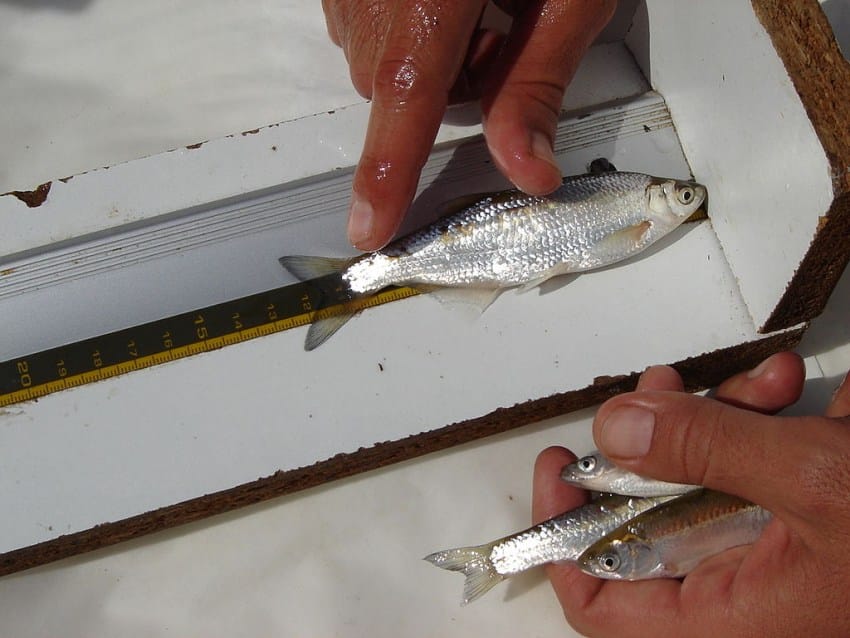
Advice! To find out if sibil is present in the reservoir, it is enough to look closely at the shore, as it prefers to feed along the shore. If you throw a piece of bread into the water, the flock will immediately expose itself.
Required tackle
As a rule, when fishing for bleak, a regular float rod is used.
Important! The tackle should not be heavy:
- The main line should be no thicker than 0.15 mm, on average its thickness is 0.12-0.2 mm, and the size of the lead line can vary from 0.08 to 0.1 mm. The diameter of the leader should be larger than the main line. Its length can be 15-30 cm.
- The hook should be no larger than No. 14 in accordance with the international classification. The forend at the hook should be elongated.
- Lead pellets serve as weights , and the largest one is installed first from the tip of the rod.
- Floats are used with a long antenna and a short keel, weighing from 1 to 3 grams. The antenna should protrude a quarter or a third above the water surface. The most proven floats are elongated and short drop-shaped. Please note , that the floating object (the bottom part of the float) should choose dark colors because this fish is bright “beats”.
A comfortable and lightweight classic fly rod with a length of 2.5 to 5 meters is used. The plug fits well. Anglers often use long reeds, cut directly on the pond, instead of a rod. You can also catch the bleak with the help of a net. All elements of the equipment should be as light and thin as possible. Fall Bleak Catch: https://youtu.be/qYj32jkXiPM
How to fish: technique, tactics, bait and tips from fishermen
Experienced fishermen, in order to attract the attention of riding fish, scoop water with their palms and throw it to the place of the float. In accordance with their recommendations, during a break in fishing or during a change of tackle, complementary foods should not be stopped.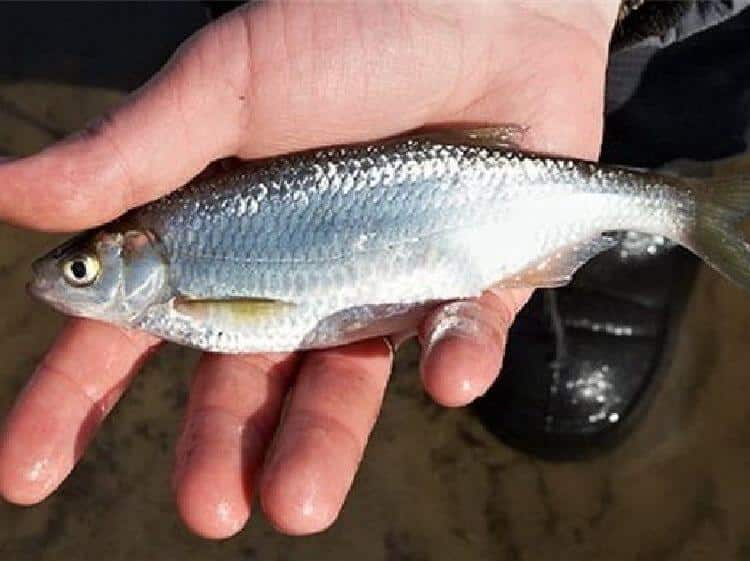
It is interesting to know that the bait is thrown a little higher upstream, and the tackle – lower.
When the bite stops, it is necessary to reduce the intensity of the bait, after which the bite will resume. When the bite increases, do the opposite. Tackle should not be thrown deep. It is much more effective to catch bleak in the spring, in the evening and in the morning. Casting a fishing rod should be noisy and biting: the upper melt will react to the splash and rush towards it.
Attention! Bakleshka bites sharply, so the angler should have an instant reaction.
In cold weather, bleak is well caught at the end of winter, during thaws. Finding it at this time is not easy: it can dwell at the bottom, at the edge of the ice or in the middle of the depth. Here you cannot do without complementary foods. The fish is not picky. The bleak bait should be small. The use of the attachment depends on the season:
- In the spring, the sylyavka is attracted to a small worm, caddis flies, bloodworms and maggots, which should be white. The fish does not consume plant food at this time.
- In the summer period, the bleach feeds on plant products, even bread crumb will peck. You can use a semolina chatterbox.
- In autumn, the fish bite weakly, so the diet should be comprehensive, including food of plant and animal origin. Maggots with pearl barley are good.
- In the winter season, burdock and bark beetle larvae serve as an excellent bait for catching barkley.

Lure
It is necessary to use groundbait in order to keep the fish in a specific place. When buying a bait mixture, you can choose any brand, but it is important that the bait is finely dispersed. In order for the mixture to create turbidity, it must be waterlogged during the mixing process. You can add 100 grams of powdered milk per 1 kg of groundbait. You can do the bait yourself. The bran and breadcrumbs are blended. They should be pre-ground in a coffee grinder. To attract fish, an aromatic additive is included in the mixture: strawberry, pear, vanilla and dill oil. Water is poured into the resulting bait and balls are molded from it.
The colder the air temperature, the more bleak needs animal food. At this time, the groundbait is mixed with the bloodworm.
Bleak fishing with a fly rod – video from the experts: https://youtu.be/ty1K2MZ0su4
Using bleak as live bait
Glue is used as live bait when catching predatory fish:
pike perch ,
asp ,
pike and
perch… However, it is characterized by weak endurance. For this reason, it is necessary to frequently check the condition of the fish that is attached to the hook. If fishing is carried out on the current, the beak is hooked to the lip on a tee or a sharp hook, and if on the lake, then the sting is passed under the fin located on the back. It is important not to injure your spine. The condition of the fish is noticeably better when the leash is held under the gill cover into the mouth, while the bends of the hook should rest against the edge of the cover. With this approach, it is not damaged, remains alive longer, and sits securely on the hook. This is the best way to attach. When storing live live bait at home, air should be supplied to the container where they are kept using an electric microcompressor. You need to change the water in the container as often as possible.When transporting live baits, it is periodically required to pump air with a rubber bulb.
Taste qualities
Fish meat has excellent taste. Moderate fat content gives the dishes a delicate taste. Bleak is especially tasty when dried. The most delicious is considered to be bleak, which was caught in August or September. In some European countries (Montenegro, for example), fried bleach is a delicacy served in restaurants.
The benefits and calorie content of meat
Fish has a high content of minerals and substances that have a beneficial effect on the body. The most important of them are: magnesium, zinc, potassium, molybdenum, fluorine. Sticking is useful for those who follow their figure. Eating it in food is recommended by nutritionists, since the fat content is only up to 12%, and the calorie content in fried and boiled form is 145 and 95 kcal, respectively.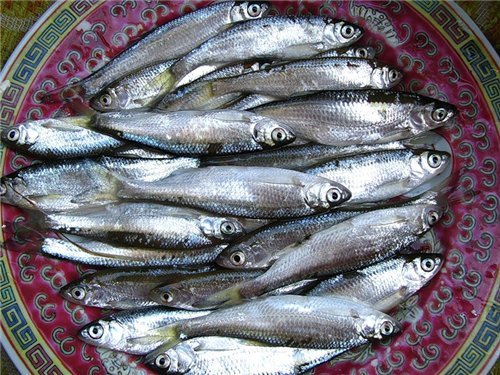
How to quickly and deliciously cook bleak – recipes
Cooking fish differs depending on its size. Small fish, not exceeding 10 cm in length, are salted with black pepper, cloves, basil and spices, and left to stand for 24 hours. The average bleak, the size of which is 10-12 cm, is defended for a day with the addition of bay leaves, black peppercorns and a small amount of sugar. After that, the fish is hung on a string in the shade. After salting, a large bleak is laid out on the layers of the newspaper, for several days it is turned over 2-3 times a day. You can cook it easier: pour two handfuls of salt on the bottom of the container, and put the catch there. After a while, the fish must be dried. How to quickly and deliciously prepare bleak / sylyavka – video recipe: https://youtu.be/x7Mq88jNXY0 Thus, a sigushka can be found in many reservoirs characterized by a moderate and calm flow.You can distinguish the head from similar fish by the number of scales on the lateral line, by the shape of the body and mouth. Bleak is a very tasty, healthy fish. The fish is schooling, so you can catch it quickly. In this case, it is imperative to take into account all the features of fishing: use light tackle, throw a fishing rod briskly, lure and attract the attention of fish, instantly react to a bite.
